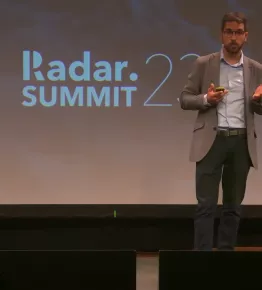Data Mesh is based on four main pillars, starting with an organization divided into data domains. What does this mean in terms of company structure?
Data domains in a nutshell
The use of data in business processes and decision making is a true driver of change to create value at all levels of the enterprise. Data Mesh is an opportunity for business areas to drive their own transformation and improve all their decision making.
Structuring data into domains that are as close as possible to the organization and processes of the company has key advantages:
- democratization of data among experts (Data Scientist, Data Engineer, Data Architects) thanks to data meshing
- better appropriation of data by operational teams
With Data Mesh, the responsibility for the data, their knowledge and their uses are entirely in the hands of the companies, we speak of the principle of "Domain Ownership".
This allows to:
- Scale data sharing as the organization grows
- Maintain rapid and continuous data change cycles
- Greater agility to reduce cross-team synchronization Improving data quality and resilience of analysis (BI, AI) by bringing producers closer to consumers (removing the complexity of intermediate data pipelines)
Organisation into data domains
The data domain approach of Data Mesh is directly inspired by the Domain Driven Design (DDD) concept. This means breaking down the data (and its use) according to a segmentation by domain.
This is a key notion, at the core of the Data Mesh concept. We must therefore pay attention to the division and distribution of the data domains.
This may be obvious for some companies, by following the functions of the organizational chart. In other companies, the distribution will be done by business or distribution channel or according to the specific needs of each entity.
In all cases, it is crucial that the breakdown by data domain reflects the business reality of the company.
The methodological approach is to map and describe the different types of data domain:
- Source-aligned data domains,
- Aggregate data domains
- Consumer-aligned data domains
Once established, the domains drive the distribution and optimisation of data. They play a key role in empowering the business lines. Domains are responsible for all data within their scope (operational or analytical data)
To this end, the domains conform to a set of roles and responsibilities.
Data Mesh and Data Domains: the best combination for businesses?
This moves to Data Mesh requires an in-depth review of the organisation and therefore very high-level sponsorship.
Data Mesh implies assigning expert data skills in the domains, as close as possible to the business, to create multidisciplinary teams delivering in an agile way.
The deployment of the organization by data domains is done in an iterative way, starting at least with a producer domain (aligned with the source) and a consumer domain (aligned with the consumer). This initiation is based on a promising, motivated and mature business.
Less mature companies can be supported and advised by the Data Office. Data domains can then be deployed with a gradual transfer of activities and responsibilities.
Companies very often come up against obstacles, in particular the difficulty of identifying relevant use cases that create value. This can often be explained by the low level of interest or acculturation of business entities with regard to data.
With Data Mesh, the business units become more than ever actors of the data strategy put in place in the company. This appropriation is done on a federated basis. Each domain thus participates in the management and optimization of the company's global data assets.
By its global approach, the data mesh approach favors the exchange of data between silos. Its solution: the creation of data domains that are both independent and interacting.



